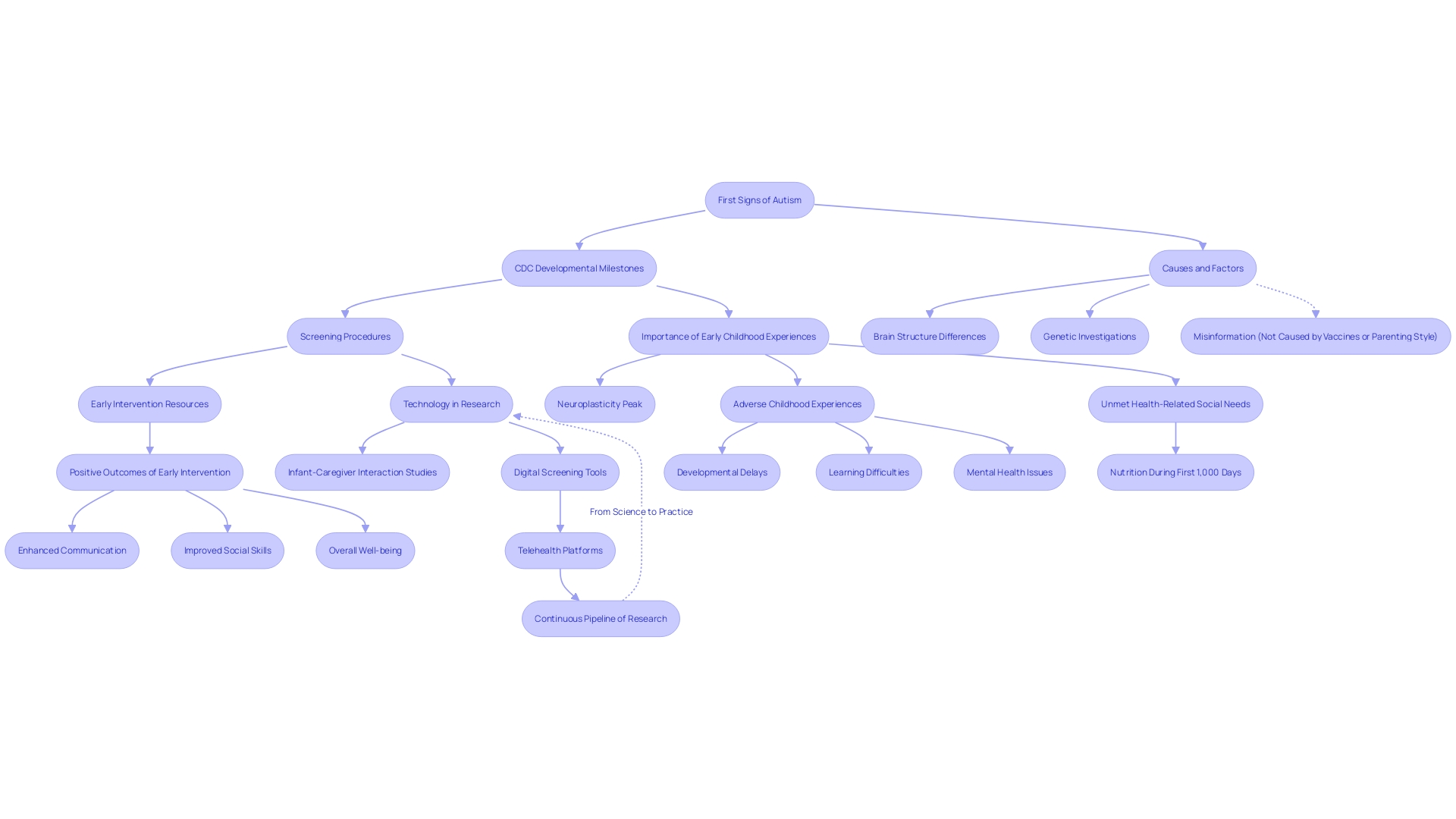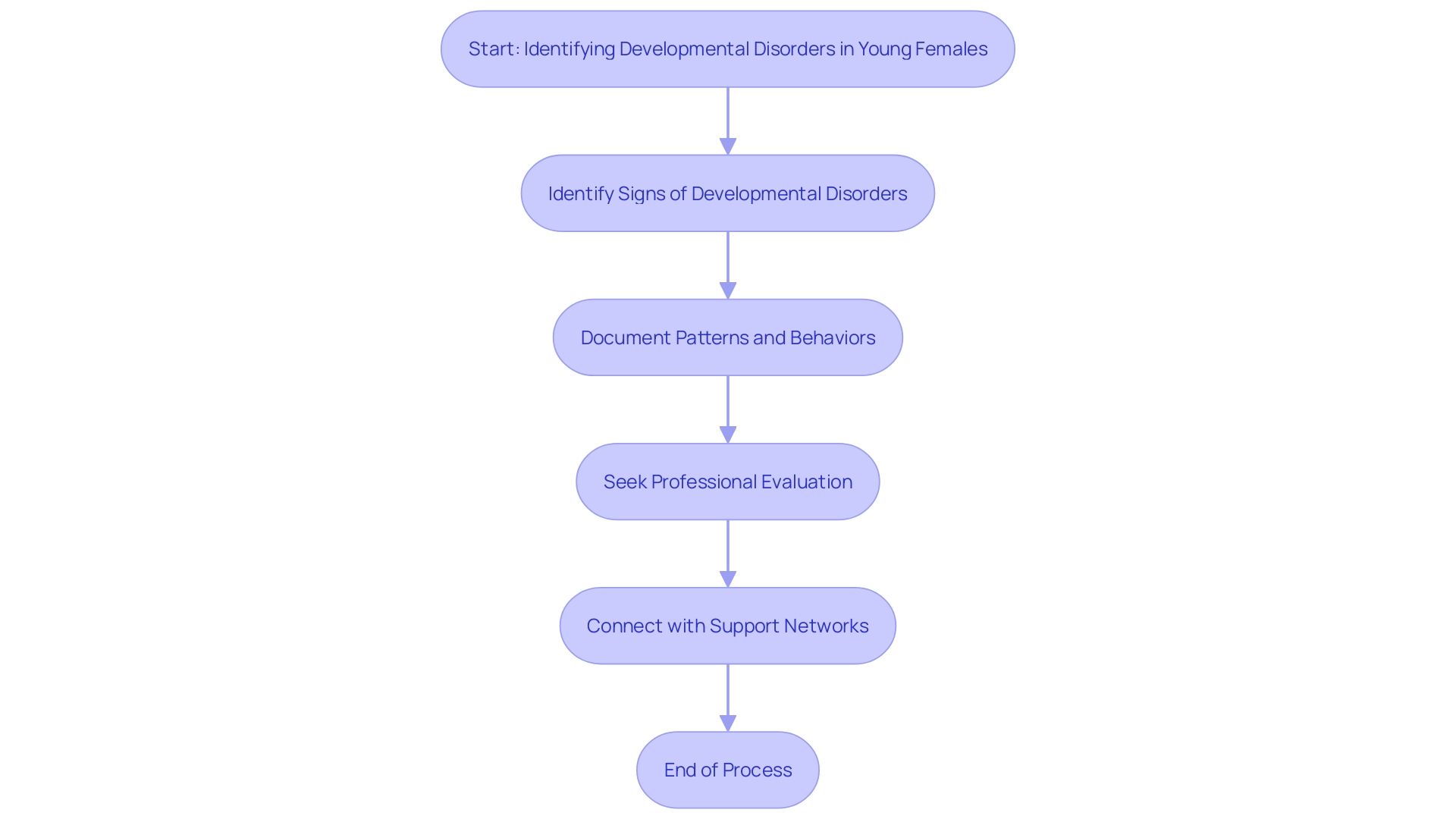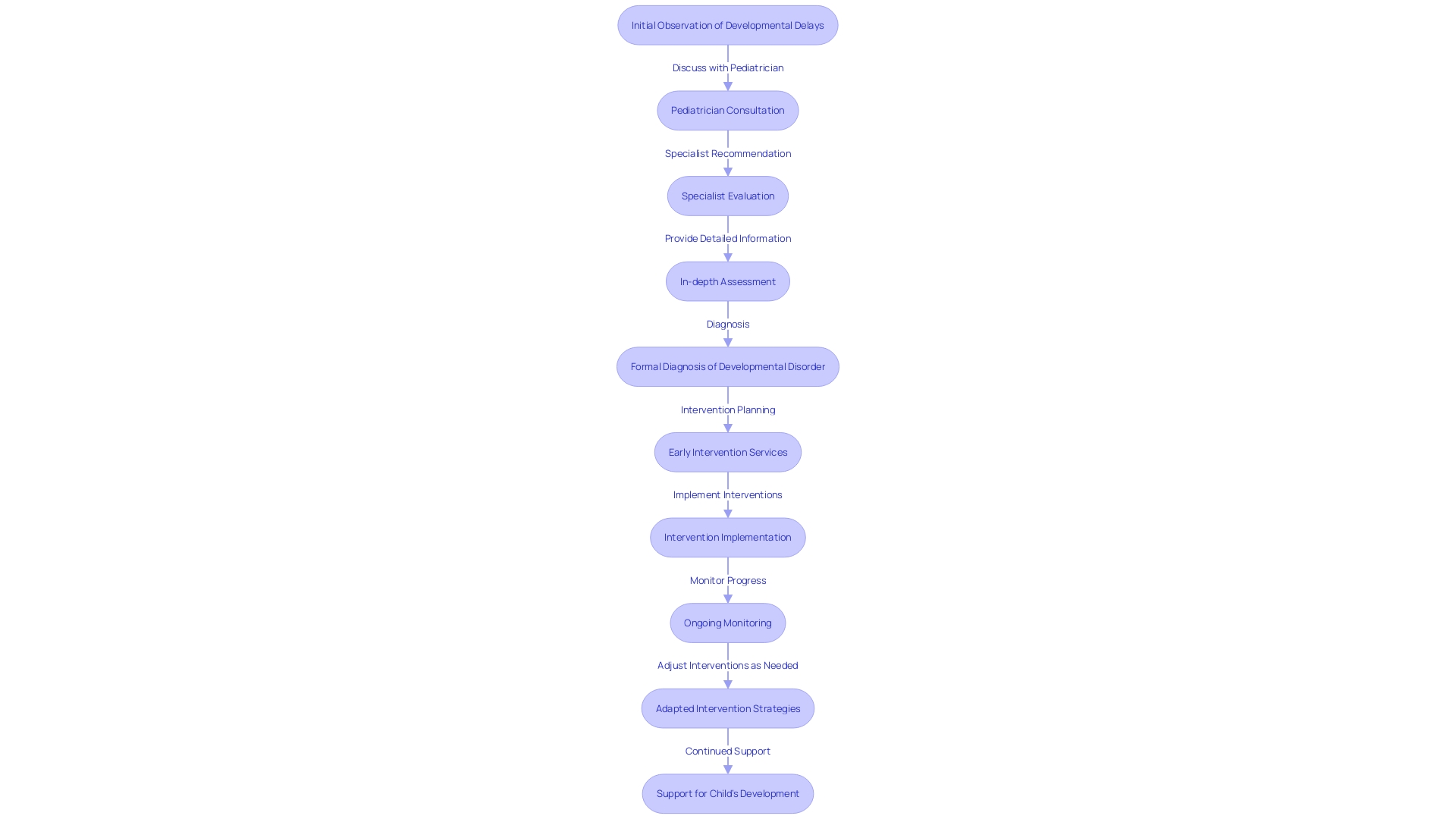Introduction
Autism spectrum disorder (ASD) presents a range of signs that can vary greatly from one individual to another. Recognizing these signs early in toddlers, particularly in girls, is crucial for timely intervention. Girls may exhibit ASD differently, often with subtleties that can be overlooked.
They might have more intense interests in certain subjects, display less noticeable repetitive behaviors, and show varied responses to social situations compared to boys. For instance, they might be more adept at masking difficulties in social interactions or may have alternative forms of self-soothing behaviors, such as those associated with eating disorders.
In this article, we will explore the unique presentation of autism in girls, the challenges in early diagnosis, the importance of early intervention, and practical tips for identifying autism in toddler girls. By understanding these crucial aspects, parents and caregivers can navigate the journey of autism with confidence, support, and empowerment, ensuring the well-being and development of their children.
Common Symptoms of Autism in Toddlers
Autism spectrum disorder (ASD) presents a range of signs that can vary greatly from one individual to another. Identifying these indications early in young children, particularly in females, is vital for prompt intervention. Girls may exhibit ASD differently, often with subtleties that can be overlooked. They might have more intense interests in certain subjects, display less noticeable repetitive behaviors, and show varied responses to social situations compared to boys. For instance, they might be more adept at masking difficulties in social interactions or may have alternative forms of self-soothing behaviors, such as those associated with eating disorders.
It is important to pay attention to how young female children engage with others, their play patterns, and any sensory sensitivities they might have. A personalized approach to diagnosis and support is key, as highlighted by a case study involving 4-year-old twins with ASD who benefited from tailored interventions by a multidisciplinary team. Given the increasing prevalence of ASD diagnoses, as observed in Australia where rates have risen sharply, understanding the distinct presentation of autism in females is more important than ever. Armed with knowledge and tools such as the 'Talking is teaching campaign and programs like Vroom and Zero to Three, caregivers can better support the development of children with ASD.
Early Signs of Autism in Infant Girls
Comprehending the intricacies of developmental disorder in young girls is crucial for parents and caregivers, as prompt detection and intervention can result in highly favorable results. While autism diagnoses typically occur around the age of two, infants can exhibit signs that may suggest the need for a closer look. These indicators can range from a lack of reciprocal eye contact and unresponsiveness to social cues, to atypical development of motor skills, disinterest in shared play activities, and challenges with feeding or establishing regular sleep patterns. Identifying these signs is the first step in seeking professional evaluation, which is crucial for providing customized assistance and interventions tailored to each child's needs.
Awareness is bolstered by ongoing research, such as the studies conducted at Goldsmiths, University of London, which reveal that babies as young as four months have heightened tactile brain responses to objects moving toward them. Such discoveries enhance our comprehension of early sensory development and its potential connections to a neurological condition. Moreover, a case study concerning dizygotic twins with level 3 severity of the condition showcases the efficacy of a non-pharmaceutical, tailored method, underscoring the significance of personalized tactics in alleviating symptoms associated with this disorder.
While specific traits, such as repetitive behaviors and sensory sensitivities, are observed in individuals with autism, it's crucial to note that these can manifest differently in females. Stimming, for example, is a common self-regulating behavior that can help in managing emotions. Furthermore, the capacity to understand nonverbal communication and social signals can differ, further highlighting the distinctive display of autism in individuals assigned female at birth. These insights emphasize the significance of a nuanced approach to the condition, acknowledging the distinct variances and requirements of every child, and guaranteeing that interventions are as impactful and helpful as can be.
Differences in Autism Presentation in Girls vs. Boys
Autism in females often goes unnoticed with nuances that can result in misdiagnosis or delayed diagnosis. In contrast to boys, females with the neurodevelopmental condition may exhibit less apparent signs, demonstrate proficiency in imitating social interactions, and participate in distinct repetitive behaviors. They may also possess a remarkable ability to mask their difficulties in social settings, which can complicate the recognition of this condition. These complexities underscore the necessity for a nuanced understanding of presentations in females who have autism.
Girls tend to exhibit variations in social interactions, such as improved social imitation skills, which can conceal typical indications of a certain developmental disorder. Their repetitive behaviors may not align with stereotypical expectations; they might be quieter and less outwardly disruptive. Sensory sensitivities can vary greatly, affecting each individual differently, and emotional regulation might manifest uniquely, sometimes in forms such as eating disorders. The capacity to interpret and react to social signals, including nonverbal communication, can also be unique in individuals with autism spectrum disorder.
Research indicates that although biological factors may predispose boys to certain developmental challenges, social factors significantly influence how autism spectrum disorder is identified in females. For example, recognition of gender diversity in the condition is increasing, with acknowledgment that characteristics and challenges frequently associated with females may also be applicable to trans and non-binary individuals. In the realm of neurodiversity, where conditions such as ADHD and dyslexia coexist with other diagnoses, girls may encounter intricate layers of identity and diagnosis.
Recent findings indicate that nearly 37% of children with ASD also present with ADHD, highlighting the complexity of neurodevelopmental conditions. Moreover, extensive research has initiated connecting genetic risk factors for a developmental disorder to observable brain changes, providing optimism for more customized interventions. In the midst of these advancements, it is becoming more evident that the condition affecting girls necessitates a customized approach to guarantee that their requirements are fulfilled and their capabilities are acknowledged.
Why Autism in Girls May Be Overlooked
Identifying developmental disorder in adult women presents distinct hurdles because of both inherent factors and societal influences. Diagnostic criteria for ASD have historically been male-centric, initially based on studies of boys, which has inadvertently led to a bias that makes identifying ASD in women more complex. Women tend to display different patterns in their behavior and social interactions, which can deviate from the established diagnostic norms. These differences are often subtle and, as a result, can be misinterpreted or overlooked entirely.
Compounding this issue is the societal expectation for girls to be inherently more socially adept. This capacity to adjust and conceal challenges can obscure underlying symptoms, resulting in delays in intervention. Additionally, research indicates that a staggering 80% of autistic females remain undiagnosed or misdiagnosed by the age of 18. The ramifications of this oversight are profound, often leading to a lack of essential support, the exhausting effort required to 'mask' one's true self to appear neurotypical, and missed opportunities to craft a supportive environment tailored to their needs. This can precipitate serious mental health issues, with statistics revealing that autistic women and non-binary individuals experience higher rates of mental ill-health compared to their male counterparts.
The impact of these diagnostic disparities is not limited to mental health alone. For instance, research on ADHD—a condition that commonly co-occurs with autism—has been underfunded, particularly concerning female subjects. This lack of focused research means that the nuances of how ADHD medication affects individuals during different hormonal stages, such as puberty, menstruation, and menopause, remain poorly understood. As emphasized by experts, understanding these reactions in women necessitates prolonged and detailed study, which is often not prioritized by research councils.
Individual stories, such as that of CEO Heather Florio, who was diagnosed with a neurodevelopmental disorder at 41, highlight the importance of identifying and understanding this condition in women. Florio's life-altering diagnosis came after years of feeling different and wrong, illustrating the transformative power of understanding one's neurodiversity. It's crucial for medical and mental health providers to be equipped with the knowledge and sensitivity to accurately identify the condition of autism spectrum disorder in women, taking into account the wide range of behaviors and symptoms that may present differently from those typically associated with men.
Key Milestones and Indicators of Autism in Toddlers
Autism spectrum disorder (ASD) is a condition that can be challenging to diagnose, especially in toddlers who are still developing their communication and social skills. Identifying the initial indicators of ASD is vital for parents and healthcare professionals to initiate intervention strategies that promote a youngster's progress and maturation.
Key indications of autism in toddlers include: - Limited or absent babbling, pointing, or gesturing by the age of one year. - No spoken words by 16 months, and no two-word phrases by 24 months. - A decline in language or social skills that the individual has previously learned. An apparent absence of interest in engaging with other youngsters.
Research underscores the significance of timely intervention, as it can greatly enhance results for individuals with autism. The American Psychiatric Association's DSM-5 provides criteria that professionals use for diagnosis, which is informed by parents' observations and specialists' assessments. There are many diagnostic tools available, but no single tool should be solely relied upon for a definitive diagnosis.
Innovative research at Goldsmiths, University of London, has highlighted the sophisticated level of sensory perception in infants as young as four months. This study highlights the significance of sensory experiences in the initial stages of development. Additionally, with nearly one in ten babies born preterm, studies at Children’s National have focused on the neurological development of these infants, noting the potential for increased risks of autism.
To assist in the development of cognitive and language skills in young individuals, programs like 'Talking is Teaching: Talk, Read, Sing' and 'Vroom' offer parents practical strategies. Zero to three, a non-profit organization, provides a plethora of science-based information and resources specifically designed for the developmental needs of young individuals up to age three.
It is also essential to acknowledge the role systemic and structural factors may play in the diagnosis and treatment of ASD. The U.S. Preventive Services Task Force (USPSTF) has recognized the impact of social constructs such as race, ethnicity, and gender on health risks and outcomes.
If you notice any of these initial signs in your offspring, it's crucial to seek advice from a medical expert who specializes in ASD for a comprehensive assessment. Together, parents and professionals can create opportunities for young individuals to reach their maximum capabilities.

Importance of Early Diagnosis and Intervention
Comprehending the importance of timely identification and intervention is crucial for the progression of youngsters with ASD. Studies underscore that therapies such as applied behavior analysis (ABA) can substantially enhance communication, social skills, and behavior when introduced promptly. Central to this proactive strategy is recognizing indications of developmental disorder early in life, particularly in young girls, to enable access to essential resources and customized assistance. These strategic interventions are designed not only to address behavioral challenges but also to foster social engagement and promote a child's holistic well-being.
The landscape of autism diagnosis and support has been evolving rapidly, with innovative technologies like AI paving the way for earlier and more precise detection. This progress, combined with pioneering research, highlights the dynamic nature of ASD's symptoms in the initial stages and the crucial opportunity for intervention to achieve the optimal outcomes. With the prevalence of ASD diagnoses increasing significantly over the past two decades, awareness and education about developmental milestones and screening at a young age have never been more important.
The imperative for prompt action is evident: employing a 'needs-led' approach, the aim is to recognize and respond to the early signs of a developmental disorder to circumvent the long wait for diagnosis and support. This transition towards early identification and support aims to prevent negative long-term consequences, such as mental health problems or educational exclusion, which disproportionately impact individuals with autism. It's a call to action for caregivers to be vigilant and for society to prioritize the resources necessary to support the development and well-being of every child with ASD (autism spectrum disorder).

How to Identify Autism in Toddler Girls: Practical Tips
Detecting the condition in young females can be a delicate and intricate procedure. It's crucial for caregivers to be knowledgeable and vigilant to ensure that early signs are not overlooked. To start, get acquainted with the specific signs of a developmental disorder that may manifest in girls, which may vary from those commonly seen in boys. These can include variations in social interaction, unique repetitive behaviors, and diverse sensory sensitivities.
Documenting patterns and specific behaviors is an invaluable step. Maintaining a detailed journal can capture nuances that might otherwise be missed. This record becomes a vital tool when consulting with healthcare professionals, providing them with concrete examples to aid in their assessment.
Professional evaluation is a cornerstone of identifying autism. It often involves a combination of descriptions from caregivers and observations by specialists, as outlined by the DSM-5 criteria. Diagnoses should not rely on a single tool but on a comprehensive review of the individual's development and behavior.
Lastly, connecting with support networks can offer a wealth of knowledge and emotional support. Parent support groups and online communities are rich resources where experiences and strategies are shared, contributing to a caregiver's understanding and ability to support their child effectively.
Incorporating these steps can help in the timely recognition of developmental disorder in toddler females, paving the way for early intervention and support systems that are so critical for their development.

Seeking Professional Help and Diagnosis
When you observe potential signs of a developmental disorder in your toddler girl, it's crucial to take steps towards a formal evaluation to ensure she receives the appropriate support. Begin by discussing with your pediatrician regarding your observations and request a recommendation to a specialist skilled in thorough evaluations. During the appointment, you'll need to provide a detailed account of your offspring's developmental milestones and any behaviors that concern you. The evaluation process might involve a series of interviews, observations, and standardized assessments to determine if your child's symptoms align with a diagnosis of a developmental disorder.
It's important to be aware that while autism has historically been underdiagnosed in females, our comprehension is evolving. Research indicates that girls with a certain developmental condition may exhibit more socially-oriented communication and imitate typical neurological patterns, which may conceal their difficulties. Stimming behaviors, such as repetitive motions or sounds, are also common and serve as regulatory mechanisms for emotional states. With reports indicating a significant increase in autism referrals and longer wait times for assessments, it's crucial to begin the diagnostic journey as soon as possible to navigate the path toward interventions that can help your child flourish.

Conclusion
In conclusion, recognizing the unique presentation of autism in toddler girls is crucial for early intervention and support. Girls may exhibit ASD differently, often with subtleties that can be overlooked. Understanding the early signs of autism in infant girls is vital for early detection and intervention.
Autism in girls often goes unnoticed or misdiagnosed due to the subtle nature of their symptoms. The importance of early diagnosis and intervention cannot be overstated. By identifying signs of autism early in life, parents and caregivers can facilitate access to vital resources and tailored support.
To identify autism in toddler girls, caregivers should familiarize themselves with the distinct indicators, document patterns and behaviors, seek professional evaluation, and connect with support networks. When potential signs of autism are noticed, seeking professional help and diagnosis is essential. By understanding the unique presentation of autism in girls and the importance of early intervention, parents and caregivers can navigate the journey of autism with confidence, support, and empowerment.




